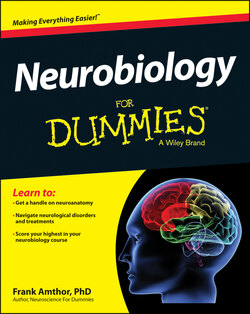Читать книгу Neurobiology For Dummies - Frank Amthor - Страница 27
The spinal cord and autonomic nervous system
ОглавлениеThe spinal cord is like a subcontractor of the brain that executes the brain’s instructions and reports on their progress. The spinal cord is part of the central nervous system, contiguous with it as it merges with the medulla of the brainstem. Chapter 6 discusses its basic organization.
The spinal cord is the transition below the neck between the central and peripheral nervous systems. The peripheral nervous system includes the motor neuron axons that originate within the spinal cord gray area and project from the cord to synapse on muscle cells. Sensory neurons — whose cell bodies are located in dorsal root ganglia just outside the spinal cord — send one axon collateral to the periphery to elaborate into a sensory receptor, while the other collateral makes conventional synapses in the spinal cord gray area for both local circuit spinal feedback control and for relaying sensory information to the brain.
The autonomic and enteric nervous systems are involved in body homeostasis (keeping the body’s major systems stable and functioning) through controlling glandular secretions, heart rate, respiration, and smooth muscle function. The autonomic nervous system has major subdivisions into sympathetic and parasympathetic branches that tend to oppose each other’s actions. The sympathetic system prepares us for action in the fight-or-flight mode, while the parasympathetic system organizes resources for digestion, and the maintenance and conservation of energy.
